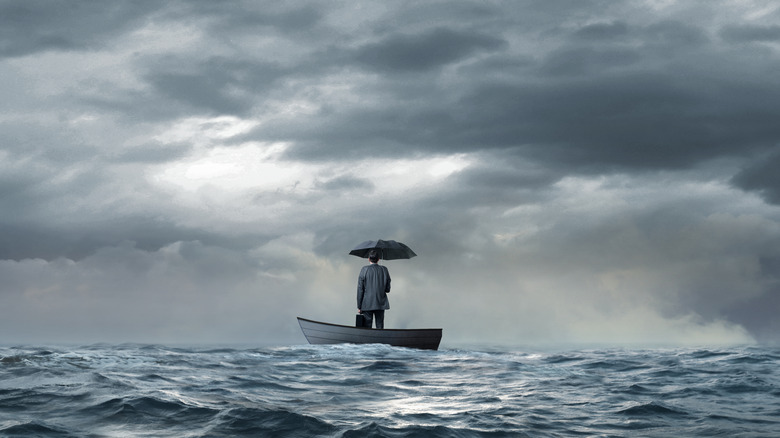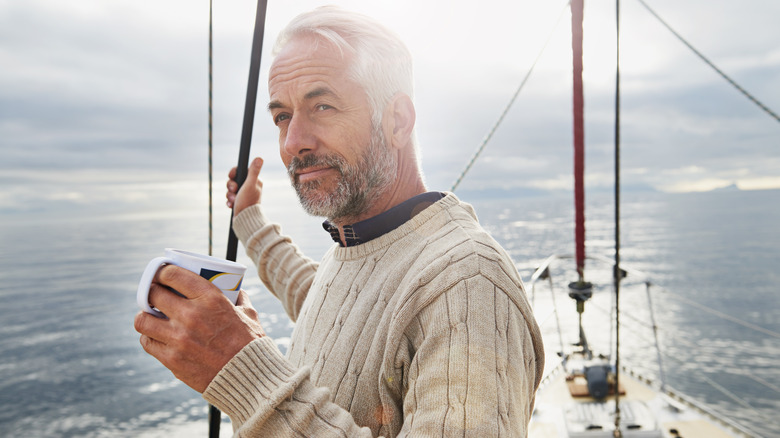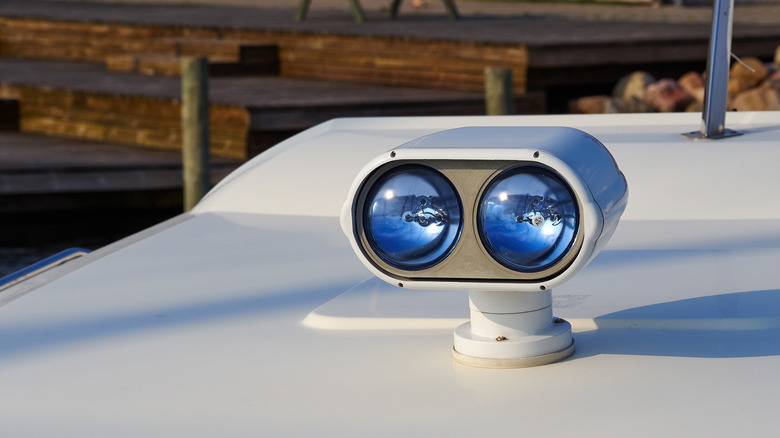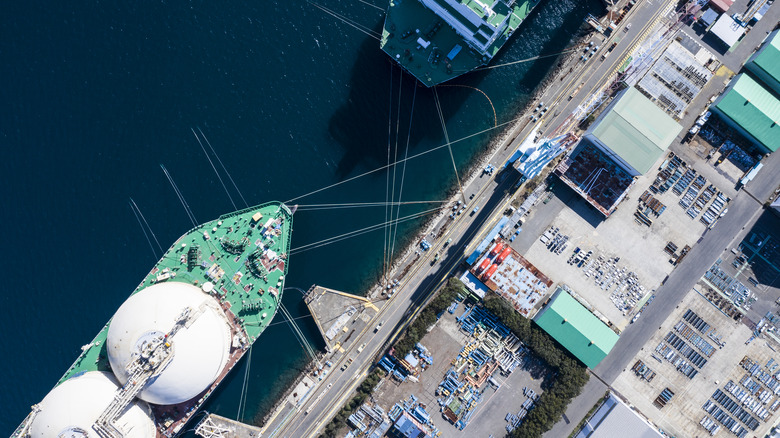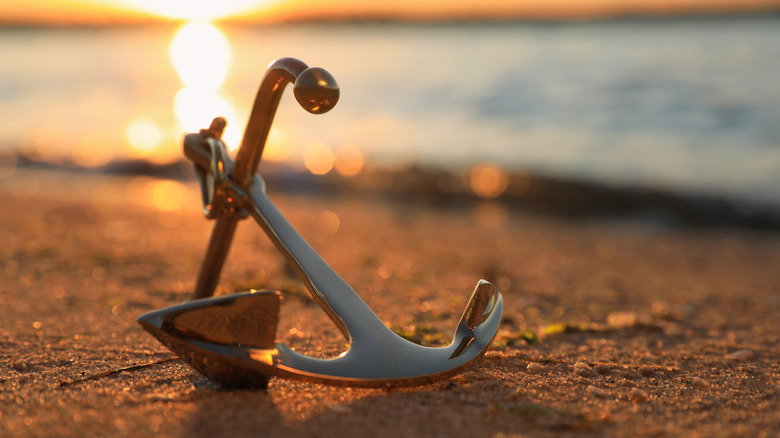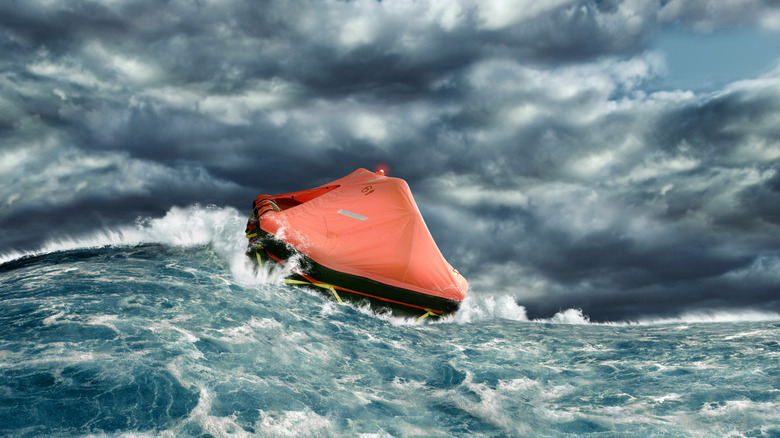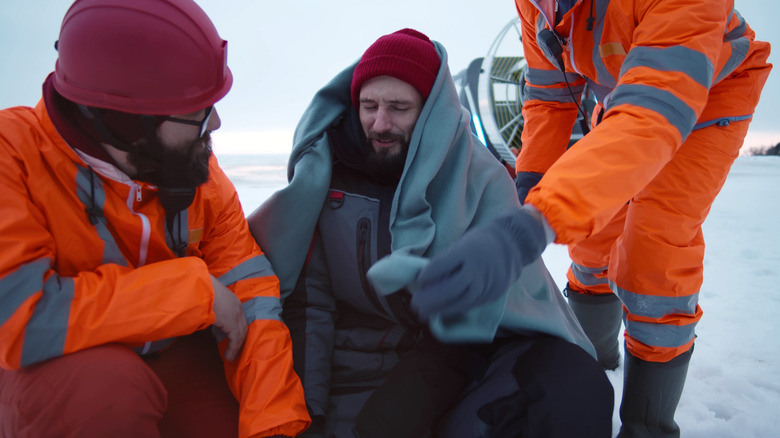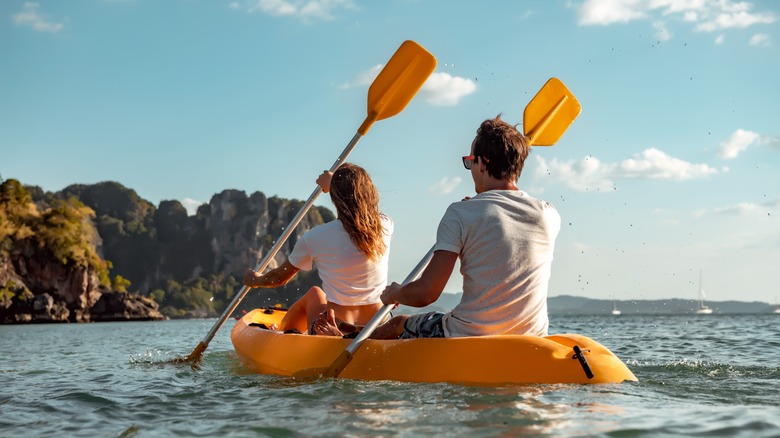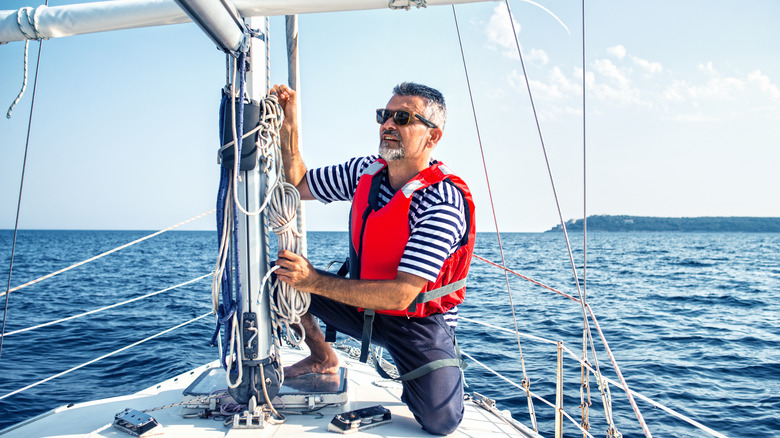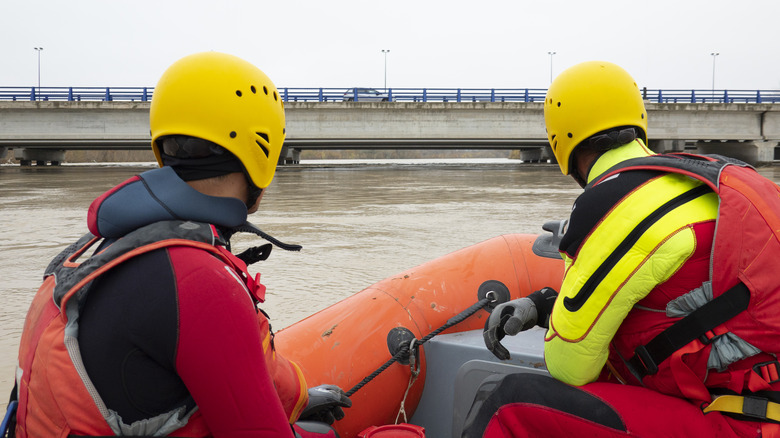What To Do If You're Lost At Sea
The phrase "lost at sea" conjures images of harrowing tales, maritime mysteries, and survival against the odds. It evokes a sense of isolation, vulnerability, and the need for quick thinking and resourcefulness. For those who find themselves in such a predicament, the vastness of the ocean can amplify feelings of uncertainty and fear. So what steps can be taken to increase the chances of survival?
In this article, we explore how to respond if faced with this daunting reality. From unexpected storms and equipment malfunctions to navigational errors and unforeseen emergencies, the ocean presents a myriad of potential dangers for sailors and adventurers alike. Whether you're an experienced mariner, an intrepid explorer, or simply seeking to prepare for the unexpected, join us as we navigate through practical advice, expert insights, and survival strategies designed to equip individuals with the knowledge and skills needed to confront and overcome the challenges of being lost at sea.
Keep calm
When faced with the daunting reality of being lost at sea, the first and most crucial step is to maintain your composure. While it's entirely normal to feel overwhelmed by fear and uncertainty, allowing panic to take over reduces your chances of survival.
A calm mind enables clearer thinking, facilitating better decision-making in critical situations. It allows you to assess your surroundings, devise a plan, and take appropriate actions. Panicking often leads to irrational behavior, which can worsen your predicament. Conversely, maintaining a composed demeanor allows you to better tap into your survival instincts and make sound choices. Remaining calm also benefits those around you. In a group setting, your composed attitude can instill confidence, cohesion, and hope among fellow survivors, fostering a collective determination to overcome adversity.
When in a perilous predicament, it can be hard to induce a sense of calmness. Luckily, there are simple tricks you can implement to tap into your nervous system and regulate your anxiety, stress, or panic. First, breathe deeply. One option is the 4-7-8 technique — inhale for four seconds, hold your breath for seven seconds, and exhale for eight seconds. Deep breathing can slow down your heartbeat and reduce blood pressure, helping you curb your anxiety. Another simple trick is to hum. Humming vibrates your vocal cords and triggers a stress reduction mechanism, as shown in a study in Cureus. Once you have cleared your mind and heart, you will better be able to concentrate on the immediate tasks at hand and the steps you can take to improve your situation.
Assess the situation thoroughly
Once you've achieved a state of calm, the next crucial step is to assess your situation objectively. To create an effective survival strategy, you need to understand your surroundings, resources, and available options. Take stock of the resources you have at your disposal, including food, water, clothing, equipment, and any survival tools. Determine how much you have and how long it can sustain you.
Evaluate the prevailing weather conditions, sea state, temperature, and visibility. These factors will influence your immediate priorities and long-term survival strategies. Use any available navigational aids — such as maps or GPS devices — to determine your approximate location and direction of drift. Knowing where you are can help you make informed decisions about your next steps and help you get located by rescuers. Assess your physical condition and the condition of others in your group, if there are others. Identify any injuries, illnesses, or medical concerns that require immediate attention. Prioritize first aid and medical care as needed.
Continuously observe your surroundings for any changes or opportunities that could affect your situation. Be prepared to adapt your plans based on evolving circumstances and new information that may arise. By carefully assessing your situation, you empower yourself to make informed decisions and take proactive steps toward survival.
Signal for help
In a desperate situation at sea, signaling for help can be your lifeline to rescue by increasing your visibility to potential rescuers and significantly enhancing your chances of being located. Some phones still allow you to make emergency calls even if you have no service, but in the event this doesn't work, there are other things you can try.
There are a few different types of signals. The first is visual. These come in the form of flares or even brightly colored objects. In the day time, waving or displaying bright flags or clothing can attract attention of rescuers. The same can be achieved by using a mirror to reflect sunlight toward passing aircraft or vessels. Flares are beneficial when light levels are low. The next group of signals is audio. Most boats are equipped with a whistle, which can be heard over long distances. They also require a lot less energy than shouting. If you must resort to shouting, use standardized distress calls such as "Help" or "Mayday" to convey urgency. If you have one (which you should), a radio transmitter like a marine VHF radio or Emergency Position Indicating Radio Beacon (EPIRB) can broadcast a distress call on the international distress frequency (VHF Channel 16 or 406 MHz for satellite phones). Start by saying "Mayday" three times and provide essential information such as the name of your boat, call letters, location, nature of distress, and number of people on board.
Maintain a consistent signaling pattern to increase the likelihood of being noticed by rescuers. Use a combination of visual, audible, and electronic to maximize your chances of being seen or heard. Alternating the use of signaling devices can also help to conserve battery power, fuel, or supplies for prolonged distress situations.
Activate any emergency beacons
Emergency beacons are invaluable tools for summoning help when lost at sea. Activating these devices can quickly alert search and rescue authorities to your distress and provide them with your precise location. According to the National Transportation Safety Board, there are two main types of emergency beacons that come in handy during dangerous boating situations.
EPIRBs (Emergency Position Indicating Radio Beacons) are typically mounted in a fixed location on board vessels or carried in survival kits. To activate an EPIRB, locate the manual activation switch (unless it is automatically deployed). Follow the manufacturer's instructions carefully. Alternatively, PLBs (Personal Locator Beacons) are compact, portable devices designed to be carried on your person. It is recommended that you keep the PLB within reach at all times, preferably attached to your life jacket or clothing. To activate a PLB, remove any protective covers, extend the antenna if applicable, and press the activation button. Hold the PLB steady and ensure an unobstructed view of the sky to maximize signal transmission.
Before activating an emergency beacon, ensure that you're in a safe location and have exhausted all other means of signaling for help. Stay near the activated beacon and wait for confirmation that your distress signal has been received and help is on the way. Avoid unnecessary movement that could impede rescuers' efforts to locate you. After activating an emergency beacon, remain calm and be prepared to provide essential information to responding authorities, including your location, nature of distress, number of people involved, and any pertinent medical or safety concerns.
Check your supplies
Regularly check your supplies to make sure you have the resources necessary to sustain yourself during a survival situation at sea. To start, ensure water and emergency rations are stored in easily accessible locations aboard your vessel or within your survival kit. When examining water containers, be thorough in checking for leaks or damage. Similarly, inspect emergency rations to confirm they are sealed and within their expiration dates. Calculate consumption rates to help you ration supplies appropriately.
A well-stocked first aid kit should be kept in a waterproof container within reach of your primary survival area. Upon inspection, carefully assess its contents, ensuring all items — from bandages to medications — are present, undamaged, and within their expiration dates. Critical survival equipment, such as signaling devices, navigation tools, shelter materials, and fire-starting supplies, should be stored in designated compartments or within your survival kit. Conduct a thorough inventory of these items, ensuring nothing is missing or damaged.
Don a life jacket
Wearing a life jacket is a critical safety measure that can significantly increase your chances of survival in a marine emergency, according to an analysis in Safety Science. Before a boating excursion, always ensure you have enough life jackets for the number of people on board and that they are size-appropriate. They should snugly fit your body without being too tight or too loose. They should also be inspected regularly for signs of wear and tear, including frayed straps, broken buckles, or waterlogging, since over time, life jackets can rip. In fact, this is why you should never buy them used. Replace any damaged or outdated life jackets immediately.
If you don't have life jackets in a time of emergency, you're going to have to improvise — look for things like inflatable pool noodles, foam cushions from seating, or empty containers or jugs (ideally securely tied together). While these may not provide the same level of buoyancy as a life jacket, they can still help keep you afloat in an emergency.
Wear a life jacket at all times when you're on or near the water, even if you're a strong swimmer or the weather seems calm. Marine emergencies can occur suddenly, and wearing a life jacket can save you valuable time in a crisis. And as always, put your life jacket on first before helping someone else.
Assess any damage
In a maritime emergency, always assess damage to your vessel or equipment. Take a systematic approach to assess damage, starting from the bow and working your way aft. Inspect the hull, deck, and superstructure for signs of damage, including cracks, punctures, or structural compromises. Pay close attention to areas below the waterline where damage may not be immediately visible. Check the integrity of mechanical systems such as engines, propulsion systems, steering mechanisms, and electrical systems. Look for leaks, malfunctions, or damage that could affect the vessel's maneuverability or safety. Also, check the bilge and pump systems for proper operation and efficiency. Remove any accumulated water or debris and test the pumps to ensure they can effectively manage water ingress in case of leaks or flooding.
Document findings and prioritize repairs based on severity and criticality. It's a good idea to have a checklist on your boat to help you with your assessments. Exercise caution when inspecting damage, especially in hazardous or unstable conditions. Wear appropriate personal protective equipment and enlist the help of others if needed.
One thing that many people forget is that they should continuously monitor the vessel and equipment for any changes or worsening conditions, especially in dynamic or adverse weather environments.
Conserve your physical resources
Conserving resources is another important step. Ration water consumption to ensure supplies last until rescue. Drink small, frequent sips rather than gulping. Do not drink seawater, as it will accelerate dehydration. Use potable water that is on board, or if needed, utilize rainwater, dew, or condensation collection methods to supplement freshwater supplies. If you don't have a water purification system, collect rainwater in clean containers.
Conserve food by eating small, nutritious meals at regular intervals. Avoid overeating, which can lead to increased water consumption and deplete your drinking water levels. Save non-perishable foods and consume perishable items first, albeit sparingly. Limit physical exertion to conserve energy. Prioritize essential tasks and avoid unnecessary movements. Rest regularly to avoid fatigue and preserve energy reserves.
In terms of your boat itself, it is best to stay in a specific location, so turning your engine off will help conserve energy further in case you need it later on.
Drop your anchor if it's safe to do so
With its engine turned off, the boat will merely drift along with the waves of the sea current. If the odds are in your favor, you'll be able to drift closer to shore, but when you're lost at sea, that might not be a bet you want to make. Fisherman's Life recommends anchoring your boat in order to increase your chances of survival. However, this is only effective if your anchor is long enough.
When anchoring your boat, it is important to ensure your boat has stopped beforehand. This is another reason to turn your engine off, as an engine will keep propelling you forward. When deploying your anchor, do so gently if you are doing so by hand. If the boat has a pulley system to help you lower it slowly, do so carefully. A good way to deploy an anchor is like this: Get the boat in the right spot, stop moving forward, and let the boat drift backward a bit while you lower the anchor into the water. Then, let out enough rope or chain (called scope) so the anchor can hold properly and dig into place.
Though there are a lot of contrasting beliefs about whether it is safe to have a boat anchored during a storm, Spade Anchor recommends anchoring as a good solution in the event winds rise or waters get choppy.
Stay visible
Staying visible increases the likelihood of being spotted by rescuers during a maritime emergency. In addition to visual signalling devices which should be used consistently in attempts to attract aid, try to position yourself in open areas with unobstructed views of the sky and surrounding water. These vantage points offer clear sightlines, facilitating the detection of distress signals by passing vessels or aircraft. Conversely, avoiding areas with dense vegetation or confined spaces that obscure visibility is essential, as such environments can hinder rescue efforts.
If you're stranded on a vessel, stay near the vessel to increase your visibility to passing vessels or aircraft, as it is more likely to be spotted from far away than you are. Also, use the vessel's structure and height to your advantage for visibility. Climbing to elevated positions or utilizing mast structures can further enhance your visibility profile, serving as beacons amidst the sea's vastness.
By prioritizing visibility and employing a variety of signaling techniques, you enhance your chances of being located and rescued during a maritime emergency. Maintaining visibility is essential for ensuring a swift and successful rescue operation.
Deploy a survival raft
If it is imperative that you abandon your boating vessel, then use a life raft, even if you have a life jacket on. A life raft will help your chances of survival by reducing the amount of energy you need to expend moving in the water. It will also keep you dry, preventing conditions like hypothermia, which is one of the most common ways people die in cold temperatures.
Identify the location of the survival raft on your vessel or within your survival equipment. Rafts are typically stored in dedicated compartments or containers for quick access. Choose a safe and accessible location on your vessel for deploying the raft. Ensure that there are no sharp objects or protrusions that could damage the raft during deployment. Select an area away from obstacles or hazards that could impede the deployment process.
Follow the manufacturer's instructions or designated procedures for deploying the raft. Typically, this involves releasing securing straps or mechanisms and pushing the raft overboard into the water. Activate the raft's inflation mechanism according to the manufacturer's instructions. This may involve pulling a cord, pressing a button, or manually inflating the raft using a CO2 cylinder or hand pump. Once inflated, board the raft carefully, ensuring that all occupants are safely inside before pushing away from the vessel. Use paddles or oars to maneuver the raft away from the vessel and into a stable position.
Establish shelter
If you must leave your boating vessel, establishing shelter is crucial for protecting yourself from the elements and maintaining core body temperature during a maritime emergency. While in the middle of the sea, it may be hard to find suitable locations for shelter, but if you happen upon caves, overhanging cliffs, or dense vegetation, these features can provide protection from wind, rain, and sun. These characteristics offer protection from prevailing winds, rain, and extreme temperatures to maximize comfort and safety.
While you want to be veiled from natural elements, you do not want to be hidden from rescuers. Ensure that your shelter is visible to search and rescue teams by incorporating signaling devices or brightly colored materials into or near its construction. Use available materials to construct or improvise shelter. This may include salvaging debris from your vessel, collecting driftwood, or repurposing items from your survival kit.
More likely than not, you will be waiting on your boating vessel for rescuers. During this time, use tarps, emergency blankets, extra clothing, or ponchos to quickly create shelter from the elements. Shelter does not need to be a physical structure. It is merely vital that you protect yourself from nature's potential harms.
Stay together
If you are boating with a group, staying together as a group is essential for maximizing safety, support, and the chances of survival during a maritime emergency. Remaining together provides mutual protection and support, reducing the risk of individuals becoming isolated or even more lost. A cohesive group can pool resources, share skills, and offer emotional support during challenging times. Staying together facilitates the coordination and organization of survival efforts, including shelter construction, signaling for help, and decision-making. A unified approach increases efficiency and effectiveness in responding to challenges.
A group of survivors is more visible to search and rescue teams than individuals scattered across a wide area. Staying together increases the likelihood of being spotted and rescued promptly. Maintain open communication channels within the group to share information, coordinate actions, and address concerns effectively. Assign roles and responsibilities to each group member based on their skills, strengths, and expertise. Clear roles help streamline tasks and avoid duplication of efforts. Maintain visual and auditory contact with other group members to ensure no one becomes separated or lost. If you have made it to land, establish checkpoints or rendezvous points to regroup if necessary.
Stay hydrated
Maintaining hydration is crucial for surviving a maritime emergency, as dehydration can quickly lead to serious health complications. Remember that saltwater can fasten dehydration, so do not drink from the sea or ocean if you are lost out here. In addition, though it is commonly propagated, the idea that you can survive by drinking your own urine is false. Pee has an even higher salt and mineral content than seawater, so drinking pee would also accelerate dehydration. If you do not have access to potable water in your boat or shop, use can use rainwater. Use portable water filtration devices, purification tablets, or boiling methods to make water safe for consumption.
If you have them in stock, consuming hydrating foods with high water content, such as fruits, vegetables, and soups, will provide additional fluids while also supplying essential nutrients and electrolytes. Limit consumption of alcoholic beverages and caffeinated drinks, as they can increase urine output and exacerbate dehydration. Opt for water or electrolyte-rich beverages instead.
Ensure that water is distributed equitably among all survivors, prioritizing hydration for vulnerable individuals such as children, the elderly, and those who are ill or injured. Pay attention to signs of dehydration, including urine color, dry mouth, dark urine, dizziness, and fatigue. Minimize exposure to direct sunlight and extreme heat, as prolonged exposure can increase water loss through sweating and accelerate dehydration. Seek shade, wear protective clothing, and use sunscreen to reduce the risk of sunburn and heat exhaustion.
Stay vigilant
Stay alert and aware of your surroundings at all times. Assign individuals to act as lookouts to monitor for approaching vessels, aircraft, or hazards. Rotate lookout duties regularly to prevent fatigue and maintain vigilance. Keep an eye out for marine wildlife, seabirds, or other indicators of nearby land or fishing grounds. Wildlife activity can provide valuable clues about your location and proximity to potential resources. If you have them, use binoculars or visual aids to extend your range of vision and detect distant objects more effectively.
Listen for auditory signals such as engine noise, aircraft overhead, or distress calls from nearby vessels. Pay attention to any unusual sounds that could indicate potential dangers or rescue opportunities. Scan the horizon regularly for signs of land, other vessels, or rescue assets.
Trust your instincts and intuition if you sense danger or uncertainty. Take proactive measures to address potential risks or threats, and communicate concerns with others in your group to build a more accurate picture of your situation,
Follow rescuers' instructions
Rescuers are trained professionals with expertise in maritime operations and emergency response. Once they arrive, following their instructions becomes paramount in streamlining rescue efforts. This not only showcases respect for their expertise but also enables them to allocate resources and personnel effectively. Compliance with instructions minimizes delays and optimizes the likelihood of a swift rescue.
Cooperation among survivors ensures order and coordination during rescue operations, mitigating confusion, chaos, and potential conflicts. It's crucial to pay close attention to rescuers' instructions and seek clarification if anything is unclear. Following instructions promptly and without hesitation is essential to minimize delays and facilitate rescue operations. While cooperating fully with rescuers and providing assistance as requested, it's equally important to avoid unnecessary risks or actions that could impede rescue efforts.
Upon completion of rescue operations, expressing gratitude to rescuers for their assistance and professionalism is paramount. A simple thank you acknowledges their efforts and dedication, fostering a positive rapport between survivors and rescuers.
